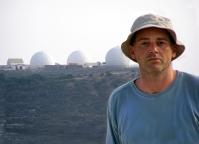Spy researcher says once improbable Bond villains now close to real thing
 Professor Richard J. Aldrich, Professor of International Security at University of Warwick says that the once improbable seeming villains in the Bond movies have become close to the real threats faced by modern security services. He says:
Professor Richard J. Aldrich, Professor of International Security at University of Warwick says that the once improbable seeming villains in the Bond movies have become close to the real threats faced by modern security services. He says:
"Throughout the Cold War, Bond's villains looked improbable, but now life imitates art. Indeed, in the early 1990s as the Cold War came to a sudden end, real MI6 officers worried about redundancy. Their boss, the real "M", Sir Colin McColl reassured them that the end of the Cold War would be followed by a Hot Peace. He was quite right. Within a few years they had joined with special forces to battle drug barons in South America and to track down war criminals in the former Yugoslavia."
"Remarkably, the Bond villains - including Dr No, Goldfinger and Blofeld - have always been post-Cold War figures. Bond's enemies are in fact very close the real enemies of the last two decades - part master criminal - part arms smuggler - part terrorist - part warlord. They are always the miscreants of globalization, they endanger not only the security of single country, but the safety of the whole world. Like our modern enemies, they thrive on the gaps between sovereign states and thrive on secrecy."
The full text of his comments now follows:
"Spying is often thought of a Cold War phenomena. Ten years ago, in the film "Goldeneye", the stern figure of "M" told 007 that he was nothing more than a historical relic. Yet even before Ian Fleming's extraordinary hero first appeared on the screen, the world of James Bond was in fact looking forward to the twenty-first century - and not backwards."
"Remarkably, the Bond villains - including Dr No, Goldfinger and Blofeld - have always been post-Cold War figures. Bond's enemies are in fact very close the real enemies of the last two decades - part master criminal - part arms smuggler - part terrorist - part warlord. They are always the miscreants of globalization, they endanger not only the security of single country, but the safety of the whole world. Like our modern enemies, they thrive on the gaps between sovereign states and thrive on secrecy."
"Throughout the Cold War, Bond's villains looked improbable, but now life imitates art. Indeed, in the early 1990s as the Cold War came to a sudden end, real MI6 officers worried about redundancy. Their boss, the real "M", Sir Colin McColl reassured them that the end of the Cold War would be followed by a Hot Peace. He was quite right. Within a few years they had joined with special forces to battle drug barons in South America and to track down war criminals in the former Yugoslavia."
"In "The Quantum of Solace" this forward-looking theme is continued. Counter-terrorism is already yesterday's business and instead Bond looks forward to the next decade when the enemies will be climate change, environmental hazard and global uncertainty. Here the villain - Dominic Greene - played by Mathieu Amalric - together with the mysterious Le Chiffre and Mr White - hide behind an organisation appropriately titled "Greene Planet". This looks like a foundation for global preservation and eco-friendly fundraising. In fact Greene Planet is a front for a secret criminal conspiracy and kleptocratic generals. 007 and the villain first come face to face at a lavish eco fund-raising cocktail party."
"The role of film and fiction in shaping the public understanding of espionage is serious stuff. Curiously, although government secret services hide in shadows, the public somehow feels it knows more about them than the more mundane work-a-day civil service. This is because "007", together with television series such as "Spooks", "24" and the "X-Files" have allowed the viewer to spend literally hours inside their highly-secure buildings."
"Programme-makers often go to obsessive lengths to get things right, albeit in reality "M"s office on the south bank of the Thames is a little less glitzy than the one portrayed in "Quantum of Solace". Secret services have come to recognise that film and fiction play an important part in the public understanding of intelligence work and the CIA has gone so far as to appoint a Hollywood liaison officer to assist film-makers whose wish to portray the agency. "
"Many films, like "The Good Shepherd", are retrospective and are praised for their historical accuracy, and some, like "The Bourne Trilogy", seek to capture the present. But few capture the wave of the future with the wonderful insight of Ian Fleming. His villains, drawn half a century ago, are truly the miscreants of globalisation. Far fetched in the 1960s, they are now the stuff of reality. We need James Bond more than ever."
Richard J. Aldrich, Professor of International Security
University of Warwick
Note for editors: The UK's Arts and Humanities Research Council have awarded £ 447k to an innovative new research project called 'Landscapes of Secrecy'. Led by Professor Richard J. Aldrich at the University of Warwick, it examines how the history of the CIA been constructed since its foundation in 1947. This is the largest research project on the history of intelligence ever to be funded by a UK government research council.
Peter Dunn, Press and Media Relations Manager
Communications Office, University House,
University of Warwick, Coventry, CV4 8UW, United Kingdom
email: p.j.dunn@warwick.ac.uk
Tel: +44 (0)24 76 523708
Mobile/Cell: +44 (0)7767 655860
